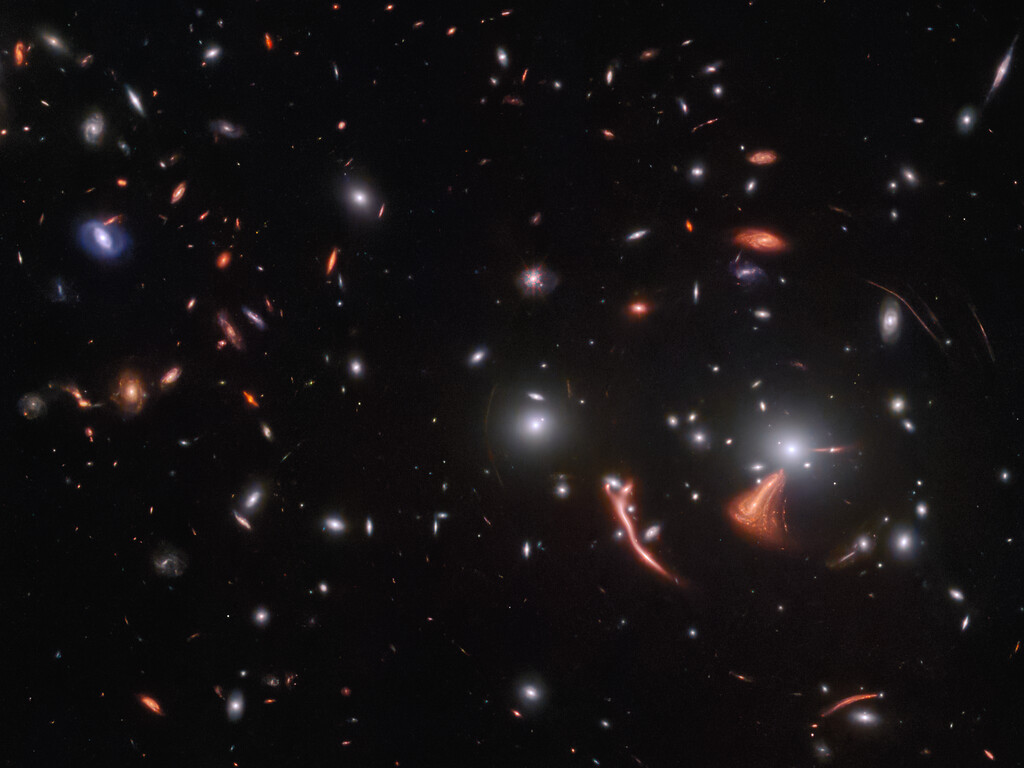Webb probes star formation in distant galaxies

This new image from the James Webb Space Telescope (JWST) is a stunning example of a natural effect called gravitational lensing, which occurs when a massive object, such as a galaxy cluster, bends the path of light around it due to the curvature of space-time. This phenomenon can distort or magnify the image of the object behind the lens.
In this Webb image, a galaxy cluster in the foreground is acting as the gravitational lens. As light from distant galaxies passes through the galaxy cluster, it is bent and magnified, creating the bright smears of light visible in the image.
Gravitational lensing is especially useful for studying objects that are too faint or distant to be observed directly by telescopes. The long, bright, and distorted arc spreading out near the core is actually a magnified image of the Cosmic Seahorse galaxy. Thanks to the magnification provided by the gravitational lens, astronomers have been able to study the distant galaxy in detail.
This image was captured using Webb's NIRCam or the Near Infrared Camera - one of the four main scientific instruments onboard the telescope. NIRCam is designed to observe and image objects in the near-infrared portion of the electromagnetic spectrum.
Here, the lensing galaxy cluster is SDSS J1226+2149, which lies around 6.3 billion light-years from Earth, in the constellation Coma Berenices.
Warped tour…of space? ✨See those strange arcs and streaks in this new Webb image? They’re actually distant galaxies, magnified and warped due to an effect called gravitational lensing: https://t.co/LwUv3MlSxu pic.twitter.com/KJpT0K6rCJ
— NASA Webb Telescope (@NASAWebb) March 28, 2023
The image is just one observation from a program designed to probe star formation in distant galaxies. In addition to revealing how stars form and evolve in these galaxies and characterizing the environments in which they gave rise to new stars, such as the presence of gas, dust, and other materials, these observations will show Webb's powerful observational capabilities.
With its crystal-clear vision and cutting-edge science instruments, Webb will be able to capture detailed images and spectra of more of these galaxies in the future, revealing new insights into their properties and behaviour.










